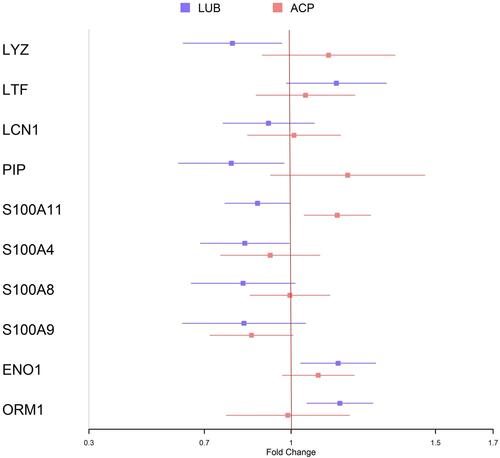Figures & data
Figure 1 Heat maps showing the result of hierarchical clustering of the changes in tear proteins. Each row represents a tear protein. Secreted proteins are shown in the top, and inflammatory proteins are shown in the bottom of the heat map. A blue color represents a decrease in the tear protein, whereas a yellow color represents an increase in the tear protein after treatment, compared to baseline readings. Participants (columns), ACP: acupuncture with artificial tear, LUB: only artificial tear. White squares: tear protein not detected. Only proteins with missing values less than 50% of the time were displayed.

Figure 2 Forest plots illustrating the change in the levels of the 10 major tear proteins previously implicated in dry eye. The colored symbols indicate mean of the fold change, and the error bars indicate standard errors of means. The four protein at the top of the plots represent proteins decreased in dry eye whereas the others are known to be elevated in dry eye. Change of >1 indicates greater than baseline levels at the end of one month, whereas a change of less than 1 indicates a reduction from baseline level.

